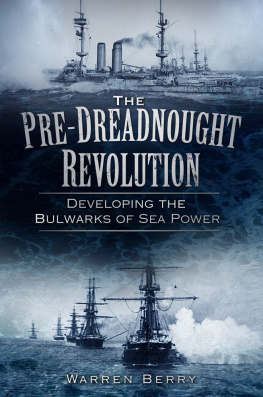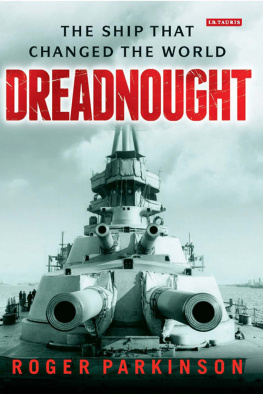IN DEFENCE OF NAVAL SUPREMACY
For understanding the dreadnought revolution, Jon Sumidas In Defence of Naval Supremacy is as important as V.R. Berghahns Tirpitz-Plan for the German naval buildup.
Professor Charles Fairbanks, International History Review
This is one of those books that fundamentally change the way people think about a certain subject.
Professor Paul G. Halpern, Albion
Sumida has offered a study that will profoundly influence our understanding of the Royal Navy before World War I and, in the widest sense, how we view the relationships between technology, finance, and government policy.
Commander (RAN) James Goldrick, Naval War College Review
this monograph must surely remain one of the fundamental studies of the subject.
Professor C.J. Bartlett, Times Higher Education Supplement
This book confirms Professor Sumidas reputation as a historian of exceptional quality.
Richard Ollard, Financial Times
tightly argued, richly researched, and historically and technologically sophisticated... a beautifully presented case study of service politics in a matter of high-technology defense procurement especially intriguing because the characteristic dilemmas, temptations and frustrations are observable in their infancy.
Professor Daniel A. Baugh, Journal of Military History
By any standards this is a remarkable book.
Robert Gardiner, Warship 1989
the definitive work on the subject.
Professor Stanley Sandler, American Historical Review
This book is a formidable achievement. It is based on exhaustive research extending over more than ten years and displays a mastery of the arcana of naval gunnery and public finance as well as of Edwardian service politics. Although Sumidas subject matter is undeniably intricate, he explains it lucidly and with a minimum of technical language, and he has a gift for concise summary... he successfully substantiates his claim to have fundamentally modified previous accounts.
Dr David Stevenson, The Journal of Modern History
This is an excellent book marvellous for its technical mastery and the authors ability to put finance and politics into touch with technology and individual idiosyncrasy.
Professor William H. McNeill, University of Chicago
IN DEFENCE OF NAVAL SUPREMACY
FINANCE, TECHNOLOGY, AND BRITISH NAVAL POLICY, 18891914
Jon Tetsuro Sumida
Naval Institute Press
Annapolis, Maryland
To the
Sumida and Washino families
This book has been brought to publication with the generous assistance of Marguerite and Gerry Lenfest.
First published in 1989
by Unwin Hyman Ltd
First published in paperback in 1993
by Routledge
11 New Fetter Lane, London EC4P 4EE
Simultaneously published in the USA and Canada
by Routledge
29 West 35th Street, New York, NY 10001
1989, 1993 Jon Tetsuro Sumida
All rights reserved. No part of this book may be reproduced or utilized in any form or by any means, electronic or mechanical, including photocopying and recording, or by any information storage and retrieval system, without permission in writing from the publisher.
First Naval Institute Press paperback edition published 2014.
ISBN: 978-1-61251-481-9 (eBook)
British Library Cataloguing-in-Publication Data
Sumida, Jon Tetsuro
In Defence of naval supremacy: financial limitation, technological innovation and British naval policy, 18891914.
1. Great Britain. Royal Navy, 18841914
I. Title
359.00941
Library of Congress Cataloging-in-Publication Data
Sumida, Jon Tetsuro
In defence of naval supremacy: financial limitation, technological innovation and British naval policy, 18891914/
Jon Tetsuro Sumida
p. cm.
Bibliography: p.
Includes index.
1. Great BtitainMilitary policy. 2. Great Britain. Royal NavyHistory19th century. 3. Great Britain. Royal NavyHistory20th century. 4. Great Britain. Royal NavyAppropriations and expenditures. 5. Technology and stateGreat Britain. I. Title.
VA454.S86 1988
359.030941dc19

 Print editions meet the requirements of ANSI/NISO z39.481992 (Permanence of Paper).
Print editions meet the requirements of ANSI/NISO z39.481992 (Permanence of Paper).
22 21 20 19 18 17 16 15 14 9 8 7 6 5 4 3 2 1
First printing
Contents
Plates
Figures
Schematic Diagrams
The Truth, replied Algernon Moncrieff, is rarely pure and never simple.
Oscar Wilde, The Importance of Being Earnest
In Defence of Naval Supremacy (IDNS) tries to answer three related questions: what prompted the Admiralty to resort to a policy of radical technical innovation in capital ship design in 1905, what factors affected the development of this policy, and to what extent and why did the policy succeed or fail. The protagonist of IDNS is Admiral Sir John Fisher, who dominated Admiralty decision making when he was service chief of the Royal Navy (First Sea Lord) from 1904 to 1910. The narrative core of this book is the story of Fishers conception of the battle cruiser and his attempts to introduce it as a less expensive replacement for both the battleship and first-class armored cruiser. Fisher was driven to pursue this course because he believed that battle cruisers would be more effective strategically and tactically, and, above all, because maintaining a conventional force structure to contain the threat posed by the combined navies of France and Russiaand possibly Germany as wellwould cost more than Britain could afford. Fisher was at first convinced that British battle cruisers could engage more heavily protected opponents without being at a disadvantage because he thought even the thickest armor could be penetrated by the latest armor-piercing projectiles. This conviction was subsequently augmented and perhaps even supplanted by his expectation that the secret development of a gunnery system invented by Arthur Hungerford Pollen, which incorporated an advanced analog computer, would enable British battle cruisers to strike their targets before they could be hit in return. Fishers position on the battle cruiser meant that he was opposed to the further construction of battleships, including Dreadnought and its successors. And he held to this opinion even after the danger posed by France and Russia had receded and Germany had emerged as a unilateral threat. Fisher was unable to implement his battle cruiser scheme, however, because circumstances made it both unnecessary and unacceptably riskythat is, changing financial circumstances enabled Britain to spend far more on the navy than he had anticipated, and the disruption of the Admiralty effort to perfect Pollens system meant that battle cruisers were not capable of hitting before they could be hit. Heavy losses at the Battle of Jutland then discredited the battle cruiser as a warship type, an outcome that obscured its intended role as the centerpiece of Fishers program to transform the Royal Navys force structure.
Next page











